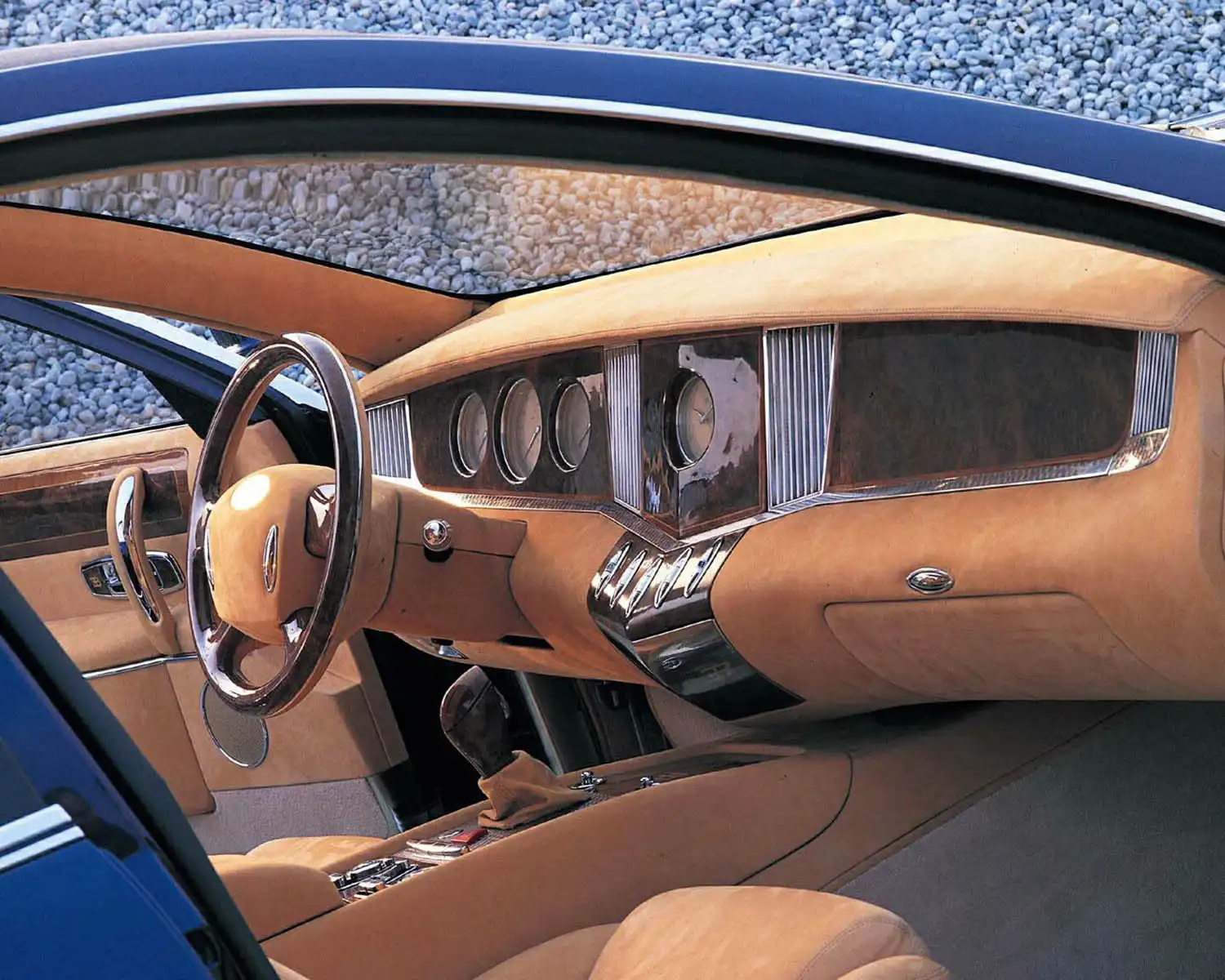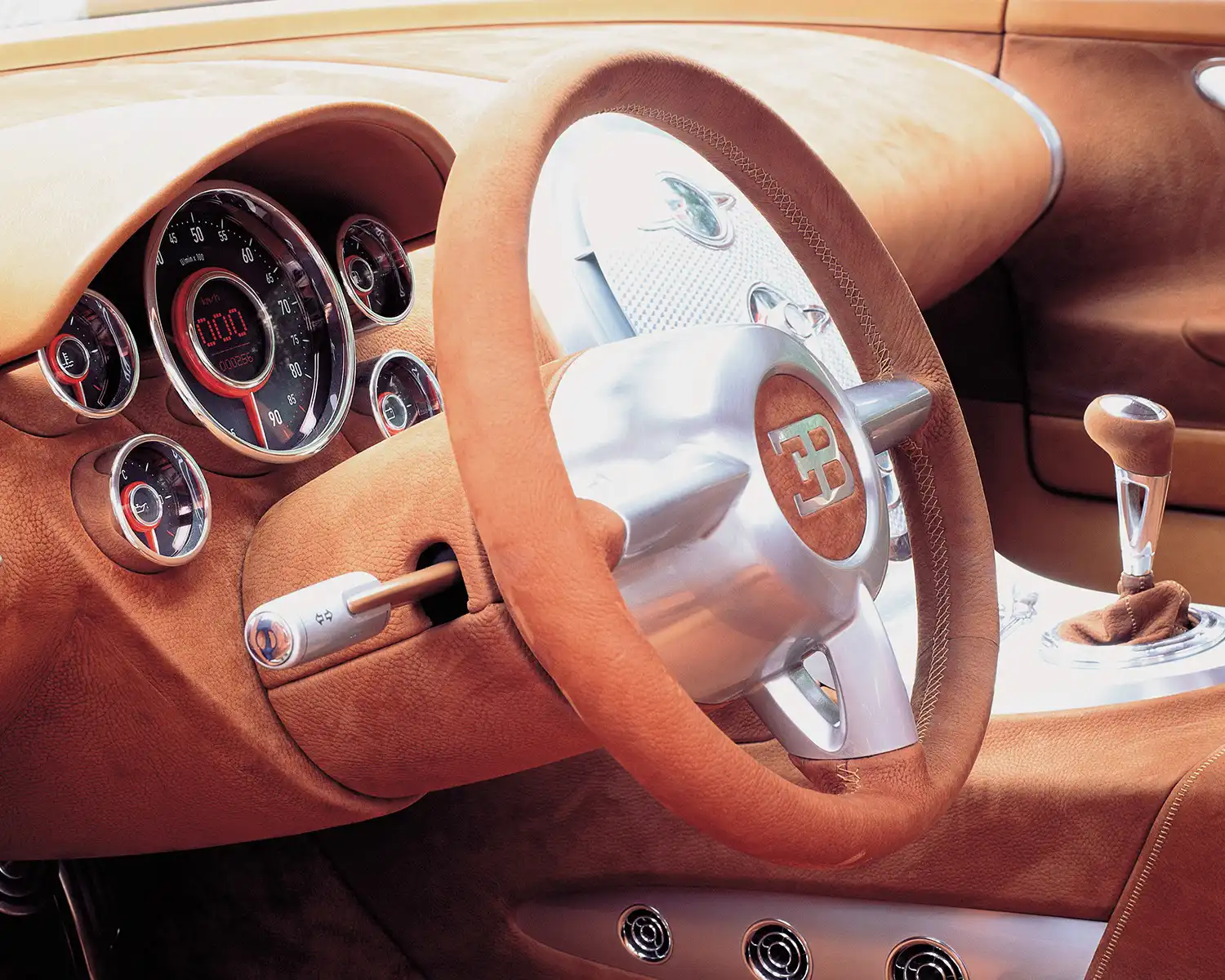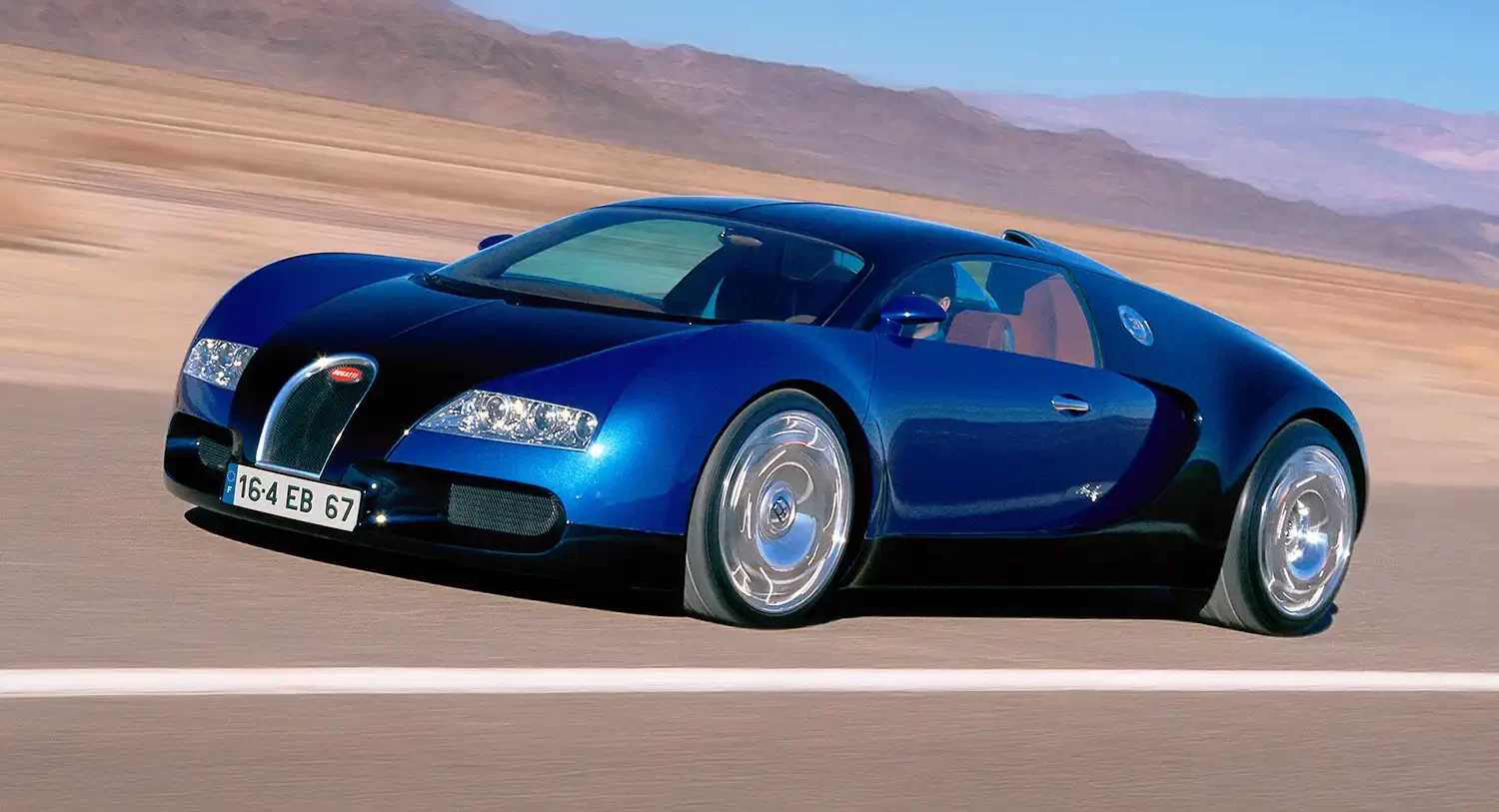
The Bugatti Veyron 16.4, launched in 2005, stands as a monumental achievement in automotive history, embodying unparalleled performance, opulent luxury, and pioneering engineering. Its creation, however, was not an instantaneous event but the result of a fascinating conceptual development spanning from 1998 to 1999. During this period, a series of distinct design studies explored various interpretations of Ferdinand Piëch’s ambitious vision, each contributing to the eventual realization of this iconic hyper sports car. The Veyron’s lineage traces back to the resurgence of the Bugatti brand under the Volkswagen Group, acquired in May 1998, fueled by Piëch’s aspiration to create a vehicle of unprecedented capabilities.
The Genesis of a Vision: The modern Bugatti story began with the extraordinary ambition of Ferdinand Karl Piëch, then Chairman of the Volkswagen Group. In 1997, driven by a desire to engineer an automobile with unmatched power and refinement, Piëch conceived a revolutionary 18-cylinder engine during a journey on a Shinkansen train in Japan. This W18 configuration, sketched on an envelope, became the foundational concept for Bugatti’s revival. Piëch’s objective extended beyond mere velocity; he envisioned a car capable of exceeding 400 km/h while delivering the comfort, elegance, and usability befitting the Bugatti name, a challenge that necessitated entirely novel engineering solutions.
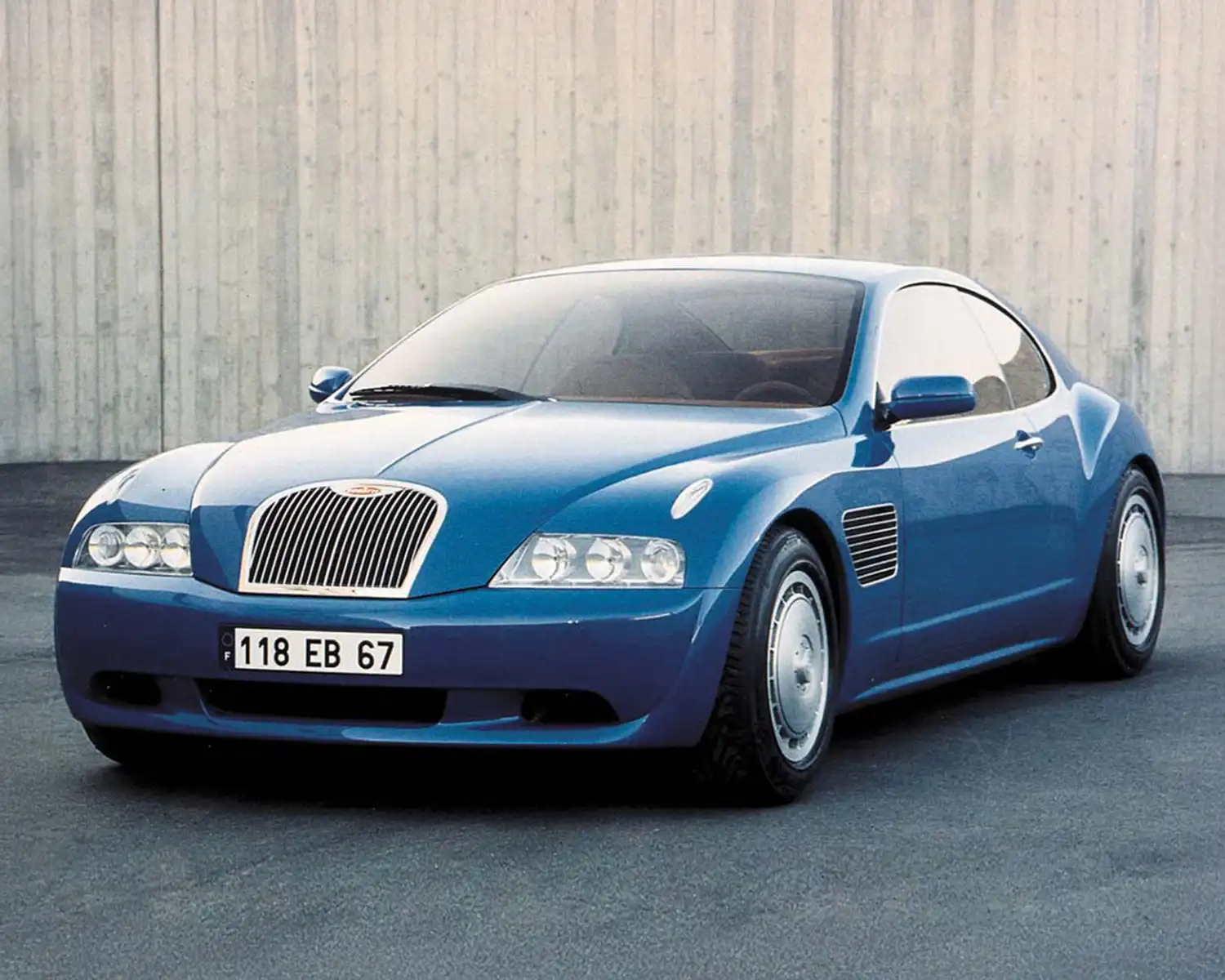
EB 118: The Grand Tourer Concept: To translate his vision into reality, Ferdinand Piëch collaborated with Giorgetto Giugiaro of Italdesign to develop a new vehicle concept. The first outcome of this partnership, the EB 118, made its debut at the Paris Motor Show in September 1998. Presented as an elegant and imposing two-door coupé, the EB 118 embodied the essence of a grand tourer. Its design was characterized by a long, sweeping hood, necessitated by the size of its front-mounted, 6.3-liter naturally aspirated W18 engine that produced 555 PS. A distinctive central bulge on the hood paid homage to the spine found on iconic Bugatti models like the Type 57SC Atlantic. The interior design drew inspiration from Art Deco, emphasizing luxury, comfort, and meticulous artisanal craftsmanship. Coupled with its advanced engineering, including the unique W18 powertrain and permanent four-wheel drive, the EB 118 served as a bold declaration of intent, seamlessly merging Bugatti’s rich heritage with forward-thinking innovation.
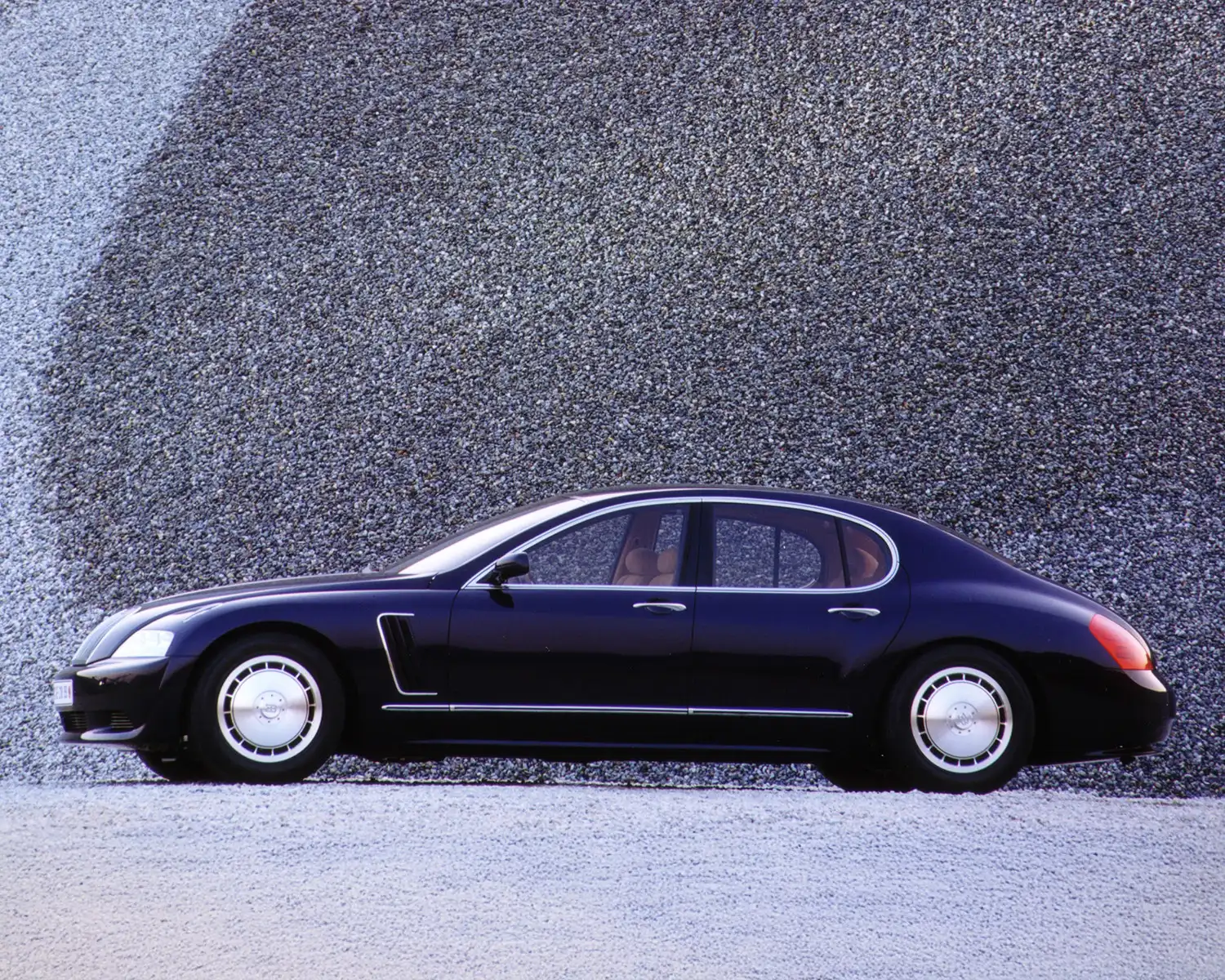
EB 218: The Luxury Saloon Study: Following closely, the EB 218 luxury saloon was unveiled at the Geneva Motor Show in March 1999. Also designed by Giugiaro, the EB 218 was presented as an evolution of the earlier Bugatti EB 112 concept from the Artioli era, but now powered by the same formidable W18 engine as the EB 118. This four-door saloon explored a different facet of the Bugatti identity, focusing on ultimate luxury and commanding presence. Longer than the EB 118, with a length of 5,375 mm, it featured subtly refined curvatures for the bumpers, lights, and hood, adapting the W18’s packaging requirements to a saloon format while retaining permanent all-wheel drive. The EB 218 demonstrated the potential versatility of the W18 engine and the brand’s capacity to produce not only coupés but also large, ultra-luxurious vehicles, reminiscent of models such as the legendary Type 41 Royale.
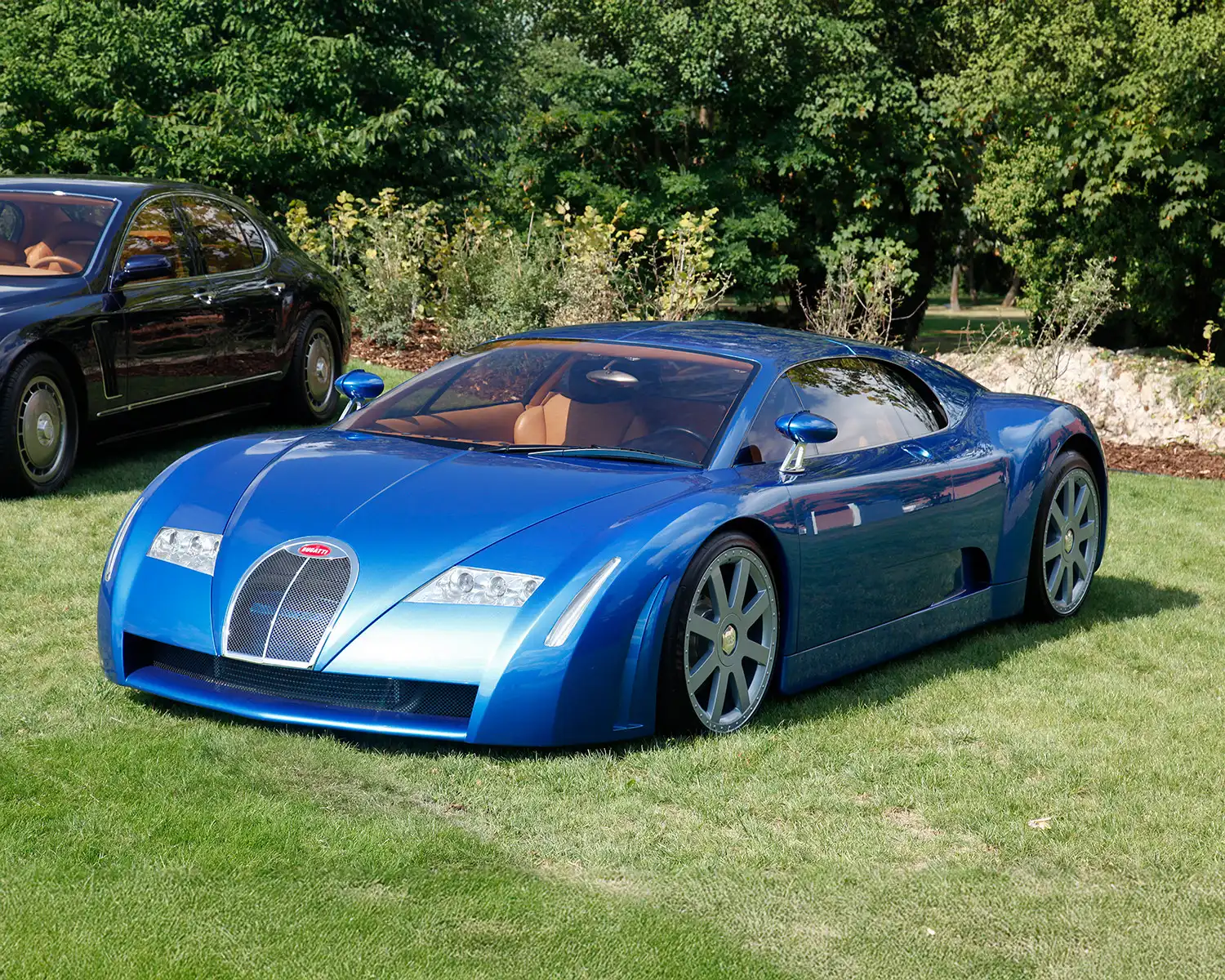
EB 18/3 Chiron: The Mid-Engine Shift: A significant change in direction occurred later in 1999. At the IAA in Frankfurt in September, Bugatti presented the EB 18/3 Chiron. Designed by Fabrizio Giugiaro under his father’s guidance, this concept marked a departure from the front-engine layout of its predecessors. The EB 18/3 Chiron was conceived as a pure, two-seater super sports car study with the W18 engine positioned in a mid-engine configuration. This fundamental change dramatically altered the car’s proportions, resulting in a more aggressive, cab-forward stance, typical of high-performance sports cars. While still featuring the 555 PS W18 engine and all-wheel drive, the styling became more intensely focused on aerodynamic efficiency and dynamic prowess. Named after the legendary Bugatti racing driver Louis Chiron, this concept signaled a clear move towards the hyper sports car territory that the Veyron would eventually dominate, exploring the W18 engine’s potential in a dedicated performance application.
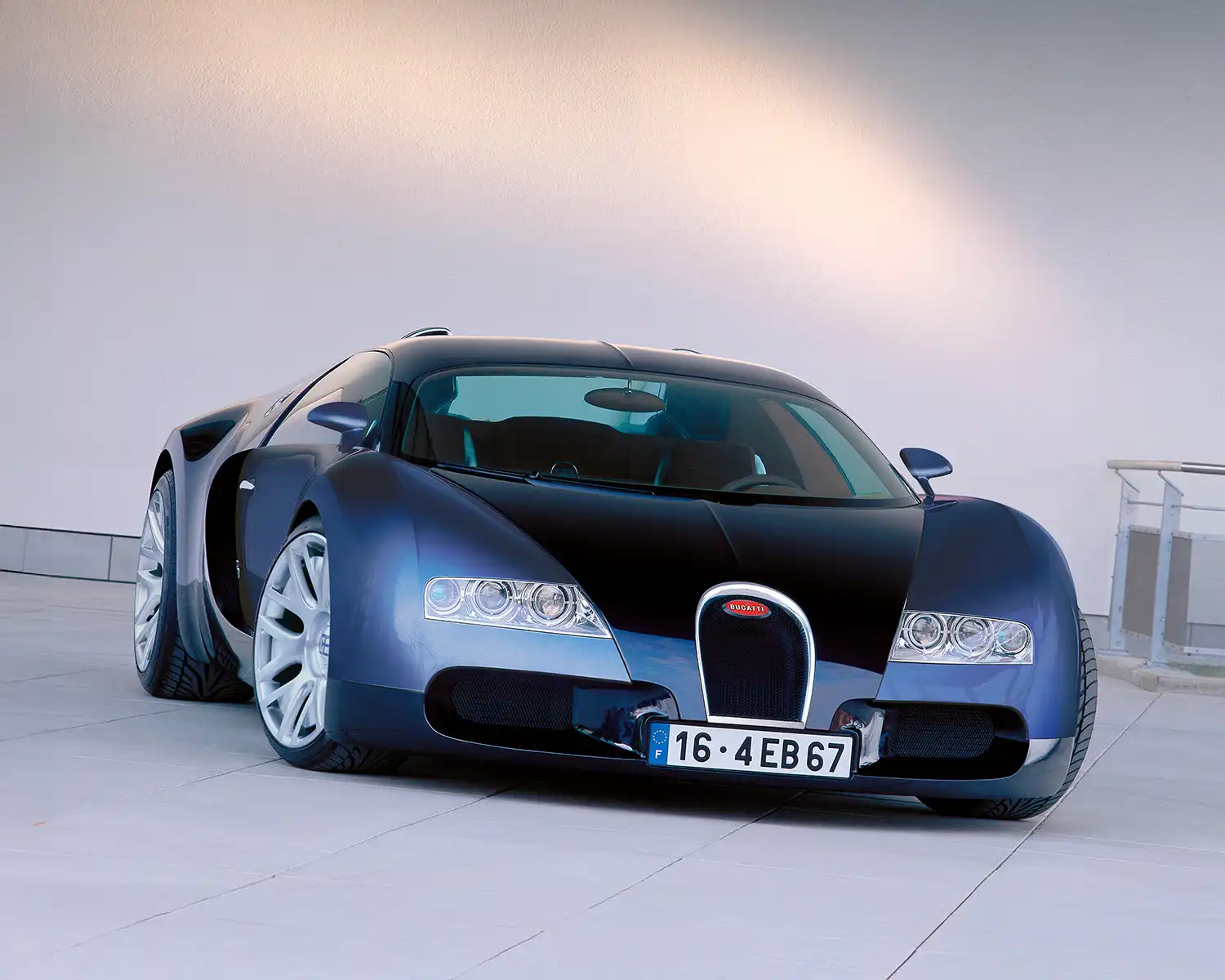
EB 18/4 Veyron: The Final Evolution: Just a month later, in October 1999, the final evolutionary step before the production Veyron debuted at the Tokyo Motor Show: the Bugatti EB 18/4 Veyron. Crucially, this concept marked a change in design leadership, moving away from Italdesign. Crafted in-house by the Volkswagen Group under the direction of Hartmut Warkuß, with the exterior penned by a young Jozef Kabaň, the EB 18/4 presented a much more compact and focused mid-engine sports car silhouette. Its styling strongly foreshadowed the production car’s iconic shape, proportions, and key design elements. Although initially shown with the W18 engine, the immense challenge of reliably extracting over 1,000 PS and managing the heat and complexity of the naturally aspirated W18 led to a pivotal engineering shift. By 2000, the decision was made to develop a new engine: the 8.0-liter, quad-turbocharged W16.

Powertrain and Performance Details: The initial concept vehicles, the EB 118, EB 218, and EB 18/3 Chiron, were all powered by a naturally aspirated 6.3-liter W18 engine, producing 555 PS. These concepts also featured permanent four-wheel drive. However, the pursuit of Ferdinand Piëch’s ambitious performance targets for the production model – exceeding 1,001 PS and a top speed of over 400 km/h – necessitated a radical change in powertrain. The final production Bugatti Veyron 16.4 was equipped with an 8.0-liter, quad-turbocharged W16 engine. This groundbreaking engine produced an astonishing 1,001 PS (736 kW) and 1,250 Nm (922 lb-ft) of torque, enabling the Veyron to achieve a top speed of 407 km/h (253 mph). The Veyron also featured a seven-speed dual-clutch transmission and permanent all-wheel drive, essential for managing its immense power and delivering its record-breaking performance.
Honoring a Motorsport Legend: The choice of the name ‘Veyron’ for the final concept and the subsequent production car was a deliberate tribute to Bugatti’s illustrious heritage. Pierre Veyron (1903-1970) was more than just a racing driver; he was a development engineer and official test driver for the brand during the 1930s. His most significant achievement came in 1939 when he, alongside Jean-Pierre Wimille, secured a victory for Bugatti at the prestigious 24 Hours of Le Mans, driving a Type 57C Tank. Naming the groundbreaking hyper sports car after Veyron directly connected Piëch’s modern vision to the golden era of Bugatti’s motorsport dominance and engineering excellence, embodying the fusion of performance and technical prowess that the new car represented.
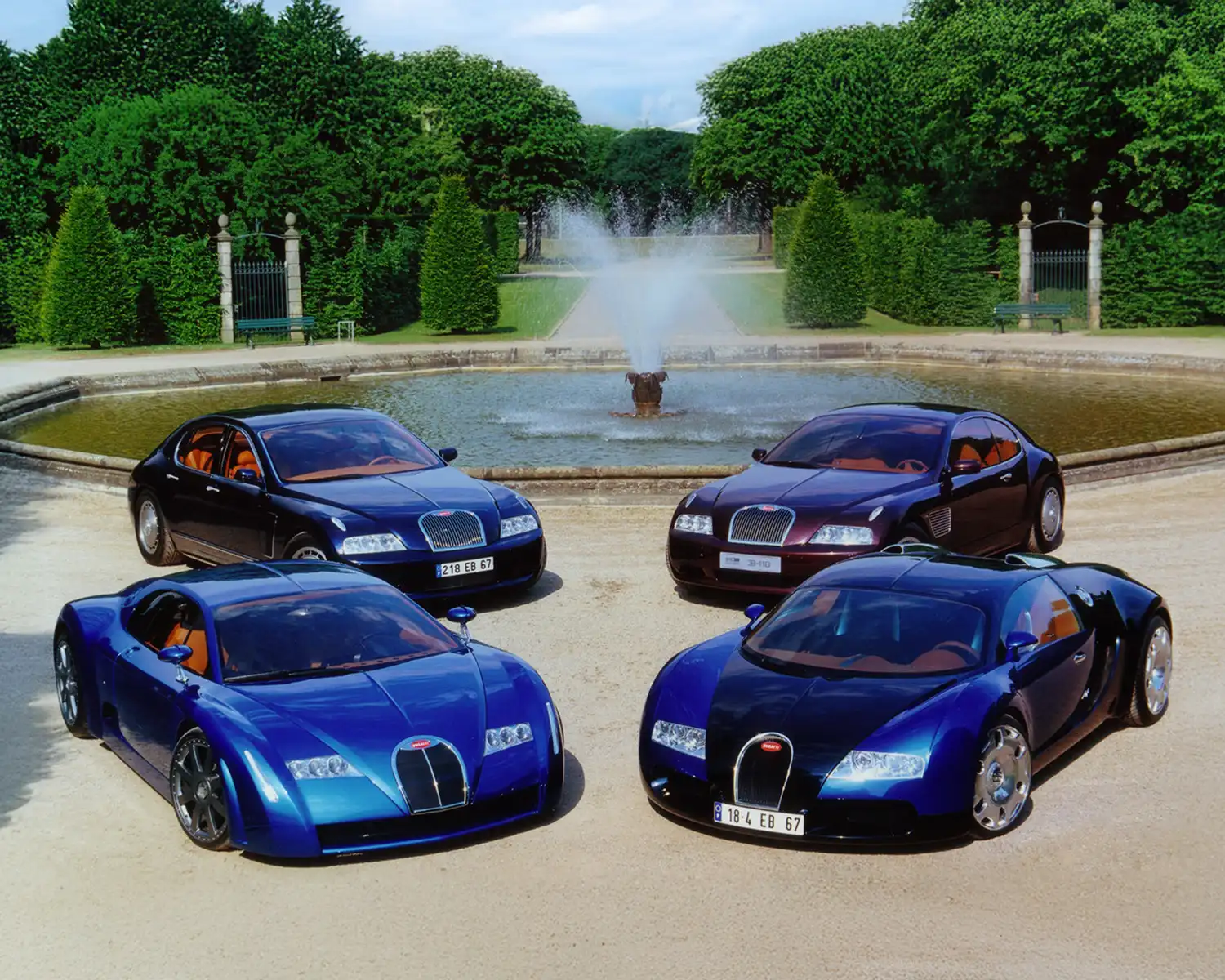
Conclusion: The journey from Ferdinand Piëch’s initial W18 sketch to the creation of the world-beating Veyron 16.4 was a testament to unwavering innovation, iterative design, and a profound respect for Bugatti’s rich legacy. The concept cars – EB 118, EB 218, EB 18/3 Chiron, and EB 18/4 Veyron – were not mere stylistic exercises but essential developmental milestones. Each explored different design philosophies and pushed the boundaries of the ambitious W18 engine before the ultimate convergence of design and the pivotal shift to the W16 powerplant defined the Veyron. They showcased the ambition, the engineering challenges, and the evolving design language that ultimately culminated in a vehicle that honored the past while simultaneously forging an entirely new future for the automotive world.
Summary>
- The Bugatti Veyron’s development involved a series of concept cars between 1998 and 1999.
- Ferdinand Piëch envisioned a revolutionary W18 engine.
- The EB 118 was a grand tourer concept with a front-mounted W18 engine.
- The EB 218 was a luxury saloon concept also powered by the W18 engine.
- The EB 18/3 Chiron was a mid-engine super sports car concept with the W18.
- The EB 18/4 Veyron foreshadowed the production model and led to the W16 engine.
- The production Veyron featured an 8.0-liter quad-turbocharged W16 engine producing 1,001 PS.
- The name ‘Veyron’ honored the Bugatti racing driver Pierre Veyron.
Disclaimer: This article discusses the historical development of the Bugatti Veyron. Specifications and features of the production model are based on information available at the time of its release.
Source: Bugatti
AI Assistance: Gemini
